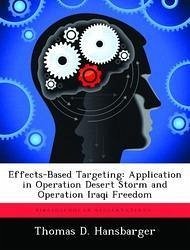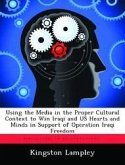Throughout history, targeting in military operations has been a critical function in achieving victory on the battlefield. The process of identifying, prioritizing, and attacking targets in accordance with the commander's intent becomes even more critical in today's complex operational environment. The United States military must be able to apply effects-based targeting to capitalize on improved capabilities in operational fires and application of national resources against a dynamic, adapting enemy. This evolving method of conducting operations focuses on creating specific effects rather than focusing on military objectives. Currently, there are many different opinions within the military on the definition, application, and feasibility of effects-based targeting. This thesis defines and identifies effects-based concepts and analyzes their application during Operation Desert Storm and Operation Iraqi Freedom. Applying these developing concepts to recent operations will help create a better understanding of effects-based targeting and assist leaders in conducting operations in a complex environment.
Hinweis: Dieser Artikel kann nur an eine deutsche Lieferadresse ausgeliefert werden.
Hinweis: Dieser Artikel kann nur an eine deutsche Lieferadresse ausgeliefert werden.








